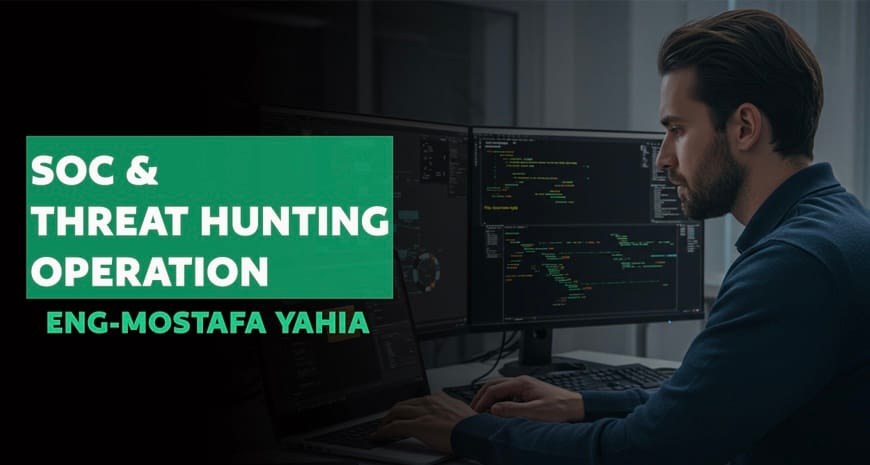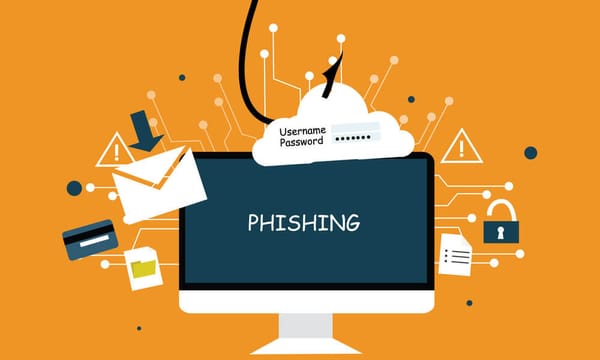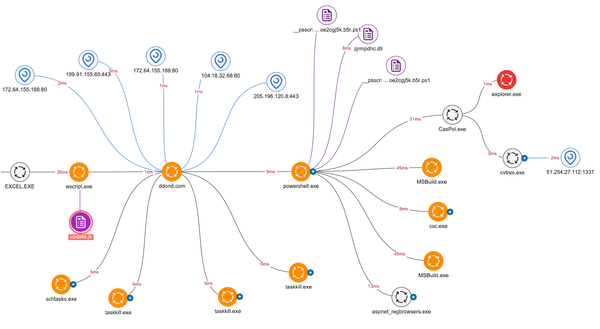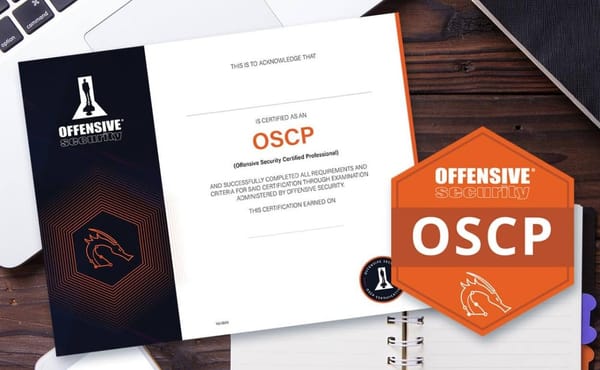Threat Hunting Operations: Integrating Proactive Detection into Traditional SOC Workflows

In today's rapidly evolving threat landscape, Security Operations Centers (SOCs) face unprecedented challenges in detecting sophisticated threats that routinely bypass traditional security controls. While alert-driven processes remain essential, organizations increasingly recognize that reactive approaches alone are insufficient against advanced persistent threats (APTs), insider threats, and fileless malware. Threat hunting has emerged as a critical discipline that complements traditional SOC operations by proactively searching for evidence of compromise before alerts are triggered.
According to recent industry research, organizations that implement mature threat hunting programs detect threats up to 2.5 times faster than those relying solely on automated alerts. Despite this compelling advantage, many SOCs struggle to effectively integrate hunting activities into their workflows, often citing resource constraints, skill gaps, and process challenges as major obstacles.
This comprehensive guide provides a structured approach to embedding threat hunting capabilities within traditional SOC environments, focusing on practical strategies, technical methodologies, and operational considerations.
Understanding Threat Hunting in the SOC Context
Before exploring implementation strategies, it's crucial to understand what distinguishes threat hunting from other SOC activities and how it complements existing processes.
What Is Threat Hunting?
Threat hunting is a proactive security activity that focuses on searching for evidence of malicious activities that have evaded existing security controls. Unlike traditional monitoring and alerting, hunting:
- Is hypothesis-driven rather than alert-driven
- Assumes breach mentality (adversaries may already be present)
- Leverages human expertise combined with tools and automation
- Relies on creative investigation beyond predefined detection rules
- Focuses on discovering unknown-unknowns in the environment
According to the SANS Institute, threat hunting can be defined as "a focused and iterative approach to searching out, identifying and understanding adversaries who have entered the defender's networks."
The Relationship Between Hunting and Traditional SOC Functions
Successful threat hunting programs don't replace traditional SOC functions but rather complement and enhance them:
Synergistic Relationship:
- Alerts trigger investigations (reactive)
- Hunting discovers previously undetected threats (proactive)
- Hunting findings improve detection rules (evolution)
- Alert investigations inform hunting hypotheses (feedback loop)
Operational Distinctions:
- Alert monitoring follows defined processes
- Hunting requires exploratory freedom
- Incident response follows structured playbooks
- Hunting methodologies adapt to emerging threats
As noted in advanced threat hunting research, effective hunting programs exist alongside traditional SOC operations rather than replacing them, creating a more comprehensive security posture.
Building the Foundation for Integrated Threat Hunting
Implementing threat hunting within an existing SOC requires establishing several foundational elements:
1. Data Collection and Accessibility
Effective threat hunting begins with comprehensive visibility across the environment:
Critical Data Sources:
- Endpoint telemetry: Process creation, file modifications, registry changes
- Network traffic: Full packet capture, NetFlow, DNS queries
- Authentication logs: Success/failure events, privilege usage
- Cloud activity: API calls, resource creation, permission changes
- Application logs: Critical business applications, authentication systems
Data Accessibility Requirements:
- Centralized storage: SIEM, data lake, or specialized hunting platforms
- Normalized format: Consistent field naming and time synchronization
- Sufficient retention: Minimum 90 days for most data types
- Query performance: Ability to run complex queries across large datasets
- Raw data access: Ability to examine unfiltered data when needed
Organizations should leverage existing SIEM implementations while potentially expanding data collection specifically to support hunting activities.
2. Threat Intelligence Integration
Threat intelligence provides essential context for developing hunting hypotheses:
Intelligence Types for Hunting:
- Tactical: IOCs, YARA rules, attack patterns
- Operational: Current TTPs, campaign information
- Strategic: Adversary motives, industry targeting trends
Integration Approaches:
- Automated feeds into hunting platforms
- Regular intelligence briefings for hunters
- Industry-specific intelligence sharing groups
- Internal intelligence derived from previous incidents
According to research on actionable threat intelligence, organizations should focus on quality over quantity when integrating intelligence into hunting operations.
3. Skills and Team Structure
Successful hunting programs require specialized skills and appropriate organizational structure:
Essential Hunting Skills:
- Technical knowledge: Operating systems, networks, forensics
- Analytical thinking: Pattern recognition, statistical analysis
- Adversarial mindset: Understanding attacker techniques
- Tool proficiency: Query languages, scripting, visualization
- Communication: Translating findings into actionable intelligence
Team Structure Models:
- Dedicated hunters: Specialized team focused exclusively on hunting
- Rotating assignments: SOC analysts rotate through hunting assignments
- Hybrid model: Core hunting team supplemented by rotating analysts
- Virtual team: Subject matter experts from different teams collaborate on hunts
Organizations with limited resources should consider starting with a virtual team model to leverage existing expertise across security functions.
4. Tooling and Technology
While hunting is primarily human-driven, appropriate tools significantly enhance effectiveness:
Core Hunting Technologies:
- Query tools: SQL, Splunk SPL, ELK Kibana, KQL
- Data visualization: Graphical analysis, timeline visualization
- Automation: Python, PowerShell for data processing
- Memory analysis: Volatility, Rekall for memory forensics
- OSINT tools: Threat intelligence gathering and correlation
Specialized Hunting Platforms:
- Commercial hunting solutions (Chronicle, Vectra, etc.)
- Extended detection and response (XDR) platforms
- Open-source frameworks and custom tooling
It's important to note that effective threat hunting depends more on analyst expertise than specific tools. Organizations should focus on empowering hunters with direct access to data and flexible query capabilities rather than implementing rigid platforms.
Developing an Integrated Hunting Methodology
Integrating threat hunting into SOC operations requires a structured methodology that balances rigor with flexibility:
1. The Hunting Process Cycle
Effective hunting follows an iterative process:
Hypothesis Formation:
- Develop hunting questions based on:
- Current threat intelligence
- Environmental knowledge
- Previous security incidents
- Adversary TTPs from frameworks like MITRE ATT&CK
Investigation and Analysis:
- Execute hunt activities using:
- Data queries and visualizations
- Pattern and anomaly analysis
- Frequency analysis and statistical methods
- Timeline reconstruction
Finding Classification:
- Evaluate and categorize findings:
- True positive: Confirmed malicious activity
- Suspicious: Requires additional investigation
- False positive: Benign explanation confirmed
- Security improvement: Policy or configuration issue
Response Actions:
- Define appropriate responses:
- Escalation to incident response
- Additional data collection
- Rule/detection enhancement
- Documentation for future reference
Knowledge Management:
- Document and share:
- Hunting techniques and queries
- Results and findings
- Lessons learned
- Detection improvements
According to SOC best practices, this structured approach ensures hunting activities produce consistent value while maintaining necessary documentation for compliance and knowledge transfer.
2. Hunt Types and Cadence
Different hunt types serve various purposes and should be scheduled appropriately:
Structured Hunt Types:
- Routine Hunts:
- Regular searches for common TTPs
- Scheduled at defined intervals
- Often partially automated
- Example: Weekly hunt for PowerShell obfuscation techniques
- Intelligence-Driven Hunts:
- Triggered by new threat intelligence
- Focused on specific adversary TTPs
- Time-sensitive execution
- Example: Searching for indicators related to a new ransomware campaign
- Hypothesis-Based Hunts:
- Explore theoretical attack scenarios
- Based on environmental knowledge
- Tests security assumptions
- Example: Investigating potential unauthorized lateral movement paths
- Analytics-Driven Hunts:
- Leverage statistical anomalies
- Identify outliers in data sets
- Often utilize machine learning
- Example: Analyzing unusual login patterns across the enterprise
Establishing Hunt Cadence:
- Routine hunts: Weekly or bi-weekly
- Intelligence-driven hunts: As needed based on threat landscape
- Hypothesis hunts: Monthly or quarterly
- Analytics-driven hunts: Based on data processing cycles
Experts from the SANS Threat Hunting Survey recommend maintaining a mix of hunt types to balance coverage of known threats with discovery of novel attack methods.
3. MITRE ATT&CK Framework Integration
The MITRE ATT&CK framework provides an ideal structure for organizing and prioritizing hunting activities:
ATT&CK-Based Hunting:
- Map hunting activities to specific techniques
- Prioritize based on relevance to your environment
- Track coverage across the attack matrix
- Measure hunting efficacy by technique
Implementation Approach:
- Identify most relevant tactics for your environment
- Assess detection coverage for associated techniques
- Prioritize hunting for techniques with limited detection
- Develop specific hypotheses for high-priority techniques
- Create and document hunting procedures for each technique
This framework-driven approach ensures systematic coverage of the threat landscape while focusing resources on the most relevant attack techniques for your organization.
Operational Integration: SOC and Hunting Workflows
The practical challenge of integrating hunting into SOC operations requires careful workflow design and process alignment:
1. Balancing Reactive and Proactive Activities
Effective integration requires balancing resources between alert handling and hunting:
Resource Allocation Models:
- Percentage allocation: Dedicate specific percentage of analyst time to hunting
- Tier-based allocation: Assign hunting to higher-tier analysts
- Rotating assignment: Cycle analysts through hunting duties
- Trigger-based hunting: Initiate hunts during periods of low alert volume
Implementation Strategies:
- Start with a modest allocation (10-20% of resources)
- Gradually increase based on value demonstration
- Consider "hunting days" for focused team activities
- Protect hunting time from alert escalation except for critical incidents
Many organizations successfully implement "no meeting Thursdays" as dedicated hunting days to ensure consistent execution.
2. Escalation and Handoff Procedures
Clear processes for escalating hunting findings to incident response are essential:
Finding Classification Framework:
- Define standardized severity levels for hunting findings
- Establish criteria for escalation to formal incidents
- Create templates for documenting findings consistently
- Define service level agreements (SLAs) for different finding types
Handoff Procedures:
- Develop formal hunting-to-IR transfer process
- Ensure comprehensive documentation of evidence
- Implement "warm handoff" for critical findings
- Create feedback loops for hunt finding resolution
According to incident response experts, effective handoff procedures should include both technical details and business context to facilitate appropriate response prioritization.
3. Automation and Integration Points
Automation creates efficiency and consistency across hunting and SOC activities:
Key Automation Opportunities:
- Data aggregation and enrichment
- Routine hunt execution
- Finding documentation and metrics tracking
- Intelligence-to-hypothesis generation
- Detection rule creation from hunting findings
Integration Technologies:
- SOAR platforms for workflow automation
- Custom scripts and scheduled queries
- Detection engineering pipelines
- Knowledge management systems
Successful SOC automation involves identifying repetitive tasks that can be automated while preserving human analysis for complex decision-making.
4. Metrics and Continuous Improvement
Measuring hunting effectiveness is critical for program justification and improvement:
Core Hunting Metrics:
- Operational metrics:
- Number of hunts conducted
- Resources allocated to hunting
- Coverage of ATT&CK techniques
- Time spent on hunting activities
- Effectiveness metrics:
- True positives identified
- Incidents discovered via hunting
- Mean time to detection improvement
- New detection rules created
- Business impact metrics:
- Reduced dwell time for adversaries
- Security incidents prevented
- Financial impact avoided
- Improved security posture
Continuous Improvement Process:
- Regularly review hunting metrics
- Capture lessons learned from each hunt
- Refine hypotheses based on findings
- Update hunting playbooks and procedures
- Adjust resource allocation based on demonstrated value
Regular reviews of these metrics help security leaders demonstrate ROI and make informed decisions about program investments.
Advanced Hunting Techniques for SOC Integration
As hunting programs mature, advanced techniques can significantly enhance effectiveness:
1. Behavioral Analytics and Baselining
Understanding normal behavior provides a foundation for identifying anomalies:
Baselining Methodology:
- Establish baselines for different entity types:
- User activity patterns
- System and network behaviors
- Application execution profiles
- Data access and movement patterns
- Calculate statistical norms for key activities:
- Process execution frequency
- Network connection patterns
- Authentication behaviors
- Resource utilization metrics
Analytics Applications:
- Identify outliers compared to historical baselines
- Detect pattern shifts over time
- Flag unusual relationships between entities
- Discover previously unknown anomalies
These techniques are particularly valuable for detecting insider threats and sophisticated attackers who avoid triggering traditional security controls.
2. Threat Hunting Playbooks
Documented playbooks ensure consistency and knowledge transfer:
Playbook Components:
- Hypothesis statement
- Required data sources
- Prerequisite conditions
- Investigation steps
- Analysis techniques
- Expected outcomes
- Decision criteria
- Response actions
- Documentation templates
Example Playbook: PowerShell Abuse Detection:
Hypothesis: Attackers are using obfuscated PowerShell to evade detection
Data Sources: Process creation logs, PowerShell script block logging, command line arguments
Investigation Steps:
1. Query for PowerShell executions with:
- Encoded commands (-enc, -encodedcommand)
- Obfuscation techniques (^ character, concatenation, reversed strings)
- Suspicious length (command line >1000 characters)
2. Analyze script block logging content for:
- Known malicious functions (Invoke-Mimikatz, etc.)
- Network connections in scripts
- Execution of binaries from unusual locations
3. Correlate findings with:
- User login activity
- Network connections following execution
- Other process creation events
Organizations should develop and maintain a library of hunting playbooks covering high-priority techniques relevant to their environment.
3. Purple Team Integration
Combining red and blue team perspectives enhances hunting effectiveness:
Purple Team Hunt Process:
- Red team shares adversary techniques they've successfully used
- Blue team develops hunting hypotheses based on these techniques
- Collaborative hunts are conducted across the environment
- Findings are used to improve both offensive and defensive capabilities
Implementation Approaches:
- Scheduled purple team hunting exercises
- Red team participation in hypothesis development
- Blue team hunters embedded with red team during exercises
- Collaborative detection engineering efforts
This collaborative approach brings an adversarial perspective to hunting activities, increasing the likelihood of discovering sophisticated threats.
4. Machine Learning Enhancement
Machine learning can augment human hunting capabilities:
Effective ML Applications:
- Anomaly detection in large datasets
- Classification of potentially malicious behaviors
- Clustering similar activities for pattern recognition
- Entity relationship mapping for connection discovery
Implementation Considerations:
- Focus on specific use cases with clear value
- Start with supervised learning for known patterns
- Gradually introduce unsupervised techniques
- Maintain human analysis for context and validation
While machine learning can enhance hunting efficiency, it complements rather than replaces human expertise. The most effective programs use ML to process large datasets and identify areas for human investigation.
Common Challenges and Practical Solutions
Organizations implementing integrated hunting programs typically encounter several challenges:
Challenge 1: Resource Constraints
Problem: Limited analyst time and competing priorities.
Solutions:
- Start small with focused hunting activities
- Implement progressive growth based on demonstrated value
- Leverage automation for routine tasks
- Consider managed hunting services for supplemental expertise
- Develop clear metrics to justify additional resources
Challenge 2: Data Limitations
Problem: Insufficient data collection or retention for effective hunting.
Solutions:
- Identify critical data gaps and prioritize collection
- Implement staged data expansion focused on highest-value sources
- Consider cloud-based storage for extended retention
- Leverage existing tools with untapped data collection capabilities
- Focus initial hunts on available data while building comprehensive visibility
Challenge 3: Skill Development
Problem: Shortage of analysts with hunting expertise.
Solutions:
- Develop internal training programs
- Pair junior analysts with experienced hunters
- Create mentorship opportunities
- Utilize external training resources
- Build a knowledge base of successful hunting techniques
- Standardize procedures to reduce reliance on specialized expertise
Challenge 4: Alert Fatigue Competition
Problem: Hunting competes with alert processing for analyst attention.
Solutions:
- Clearly define when hunting takes priority
- Implement protected hunting time
- Use automation to reduce alert processing burden
- Focus hunting on gaps in automated detection
- Demonstrate how hunting reduces alert volume through improved detection
Case Study: Integrating Hunting in a Mid-Size Enterprise SOC
To illustrate practical implementation, consider this real-world example of a mid-size financial services company integrating threat hunting into their existing SOC:
Organization Profile:
- 5,000 employee financial services company
- SOC team of 8 analysts across three tiers
- Primarily alert-driven operations
- Growing concern about advanced threats
Implementation Approach:
Phase 1: Foundation Building (Months 1-3)
- Assigned two Tier 3 analysts to part-time hunting roles (20%)
- Focused on data accessibility and basic hunting tools
- Developed initial hunt hypotheses based on industry threats
- Created simple metrics and tracking mechanism
Phase 2: Initial Hunting Operations (Months 4-6)
- Established weekly hunting schedule
- Implemented first hunting playbooks for common TTPs
- Created finding classification framework
- Developed escalation process to incident response
Phase 3: Expansion and Integration (Months 7-12)
- Extended hunting rotation to include Tier 2 analysts
- Implemented automated data preparation
- Developed threat intelligence integration process
- Created dashboard for tracking hunting metrics
- Established formal knowledge transfer process
Results After One Year:
- 48 successful hunts conducted
- 11 previously undetected compromises discovered
- 37 new detection rules implemented
- 22% reduction in mean time to detection
- Program expanded to 30% of analyst time
This phased approach allowed the organization to demonstrate value incrementally while building capabilities and processes in a sustainable manner.
The Future of Integrated Hunting Operations
Looking ahead, several trends will shape the evolution of threat hunting within SOC operations:
1. Extended Detection and Response (XDR) Integration
As XDR platforms mature, they will provide unified data access and analysis capabilities that enhance hunting effectiveness:
- Cross-domain visibility (endpoint, network, cloud, identity)
- Built-in baselining and anomaly detection
- Automated correlation of related activities
- Integrated response capabilities
Organizations should evaluate how XDR adoption will affect their hunting operations and prepare for the transition.
2. Automation and Orchestration Advancement
Increased automation will allow human hunters to focus on complex analysis:
- Automated execution of routine hunting procedures
- AI-assisted hypothesis generation
- Natural language processing for threat intelligence analysis
- Automated documentation and knowledge management
The most successful programs will balance automation with human expertise rather than attempting to fully automate the hunting function.
3. Collaborative and Community-Based Hunting
Industry collaboration will enhance hunting effectiveness:
- Shared hunting hypotheses and playbooks
- Collaborative platforms for technique sharing
- Crowdsourced detection development
- Industry-specific hunting communities
Organizations should actively participate in these collaborative efforts while maintaining appropriate operational security.
Conclusion
Integrating threat hunting into traditional SOC operations represents a significant evolution in cybersecurity defense strategy. By combining the reactive capabilities of alert-driven monitoring with the proactive approach of hypothesis-driven hunting, organizations can substantially improve their ability to detect sophisticated threats that evade conventional security controls.
The key to successful integration lies in a structured approach that balances formality with flexibility, technical depth with operational practicality, and innovation with consistency. Organizations should begin with a clearly defined hunting methodology, establish appropriate governance structures, and focus initially on high-value hunting use cases that demonstrate tangible security improvements.
Remember that effective threat hunting is not a discrete project but an ongoing operational capability that requires continuous refinement and adaptation. By following the framework outlined in this article, security teams can build a sustainable hunting program that evolves alongside the threat landscape and progressively enhances overall security posture.
For organizations just beginning their threat hunting journey, start small, focus on value, document successes, and progressively expand capabilities based on demonstrated results. With proper implementation, threat hunting will become an indispensable component of modern security operations.
Tags: threat-hunting, soc-detection-techniques, advanced-threat-detection, security-operations-center, blue-team-strategies
Meta Description: Learn how to integrate proactive threat hunting into traditional SOC workflows with this comprehensive guide covering methodologies, team structures, technical requirements, and operational considerations for effective detection of advanced threats.




